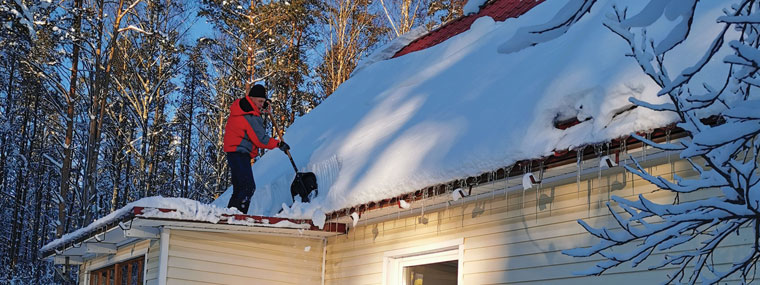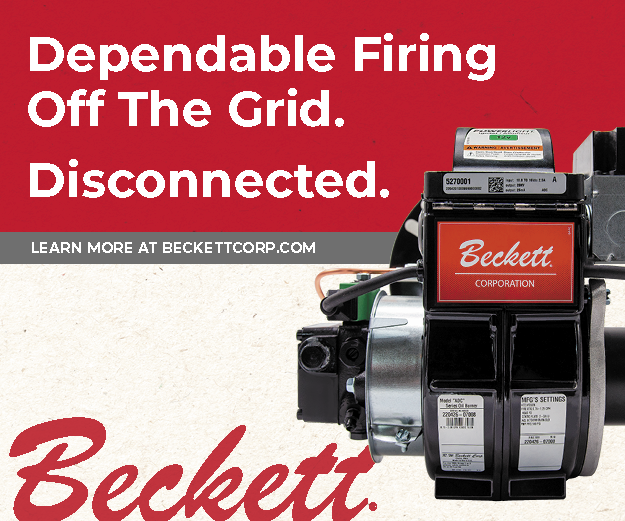
Dealing with the Cold
By Diane M. Calabrese / Published November 2023

Cold soup can be overlooked. Cold weather cannot.
Contractors strive to work across as many months of the calendar as possible. But in most parts of the country, there is a period of cold weather that must be factored into business planning. Cold weather does not preclude all work. In fact, it necessitates some.
Like utility workers, law enforcement, road-clearing teams, and emergency personnel who work safely in subfreezing temperatures, contractors can do the same. Understanding potential risks and embracing prudence (e.g., dry clothes, layered clothes) keeps employees safe. [See details about risks and countermeasures in last section, Safety Basics.]
“We stop at 21 degrees,” says Mike Hilborn, owner of RTD Power Washing in Saint Paul, MN. But that’s a carefully assessed, in-context look at the Fahrenheit reading.
“Windchill also plays a factor,” explains Hilborn. And the temperature and windspeed must be monitored to be sure conditions are safe.
“This is something each contractor has to figure out for themselves,” says Hilborn. “The nice thing is you can wash below 32 degrees.”
Often the work a contractor takes on in winter requires working in cold conditions. “You just have to figure out what that temperature is based on what you are washing,” says Hilborn. “For example, we removed ice dams with steam down to 0 degrees.”
Working successfully in a cold environment begins with a methodical approach. “Ice dams do not have a temperature floor,” explains Hilborn. “Your equipment freezing is your biggest issue. You will have to set up your equipment in stages, always keeping the water flowing through the equipment to prevent it from freezing.”
Doing everything correctly encompasses thinking beyond the target itself. Contractors working at temperatures above 32°F must be aware that the temperature can fall before substrates dry.
“Be sure that you don’t leave an icy parking lot or walking surface,” says Hilborn. “We don’t want anyone to slip and get hurt.”
A precipitous fall in temperature easily converts a parking lot to an ice rink. Thus, contractors working safely at 40°F must be attuned to the likelihood the temperature will fall fast to 20°F, causing residual water to freeze and putting an area off limits until it can be treated. “You don’t want to freeze shut what you are washing,” says Hilborn.
“It can sometimes be too cold to wash,” says Hilborn. “We stop at about 21 degrees.” Acute attention to both the safety of employees and the community rank as first and second considerations. “Third, you can’t let your equipment freeze,” says Hilborn. “This is a big one. Employees don’t get how immediately equipment freezes.”
Understand the parameters of the project—the nature of the substrate, the ambient conditions, and how quickly they might change. Then plan, and follow the plan.
“Different types of things have different temperature floors,” says Hilborn. “Nice to know the floor is often below 32 degrees so you don’t stop simply because it is 32 degrees,” says Hilborn.
SUPPORTIVE HEAT
Working outdoors in low temperatures has always been part of life. In earlier centuries there was no option.
Firewood had to be felled and chopped throughout winter. Ice often had to be melted to get potable water. Supportive heat—from fires at cattlemen’s campsites to a hearth (with a soup pot)—made it possible.
Supplemental heat can warm crews when they take a respite in a portable shelter. It can also prevent equipment from freezing.
And infrared heaters are in the mix. “Our standard infrared heaters are used in every industry imaginable—in construction, warehouses, agriculture, water damage restoration industry, or anywhere that requires heat to keep employees, workers, customers, and even animals comfortable, or to keep equipment from freezing over,” says Ken Yoshitake, president and CEO of J.S. O’will Inc. in Federal Way, WA.
“Our portable infrared heaters—the Val6 brand—have been in the heat industry for about 20 years now with our very first model, the Z1,” explains Yoshitake. The heaters are designed to provide “reliable, quality, cost effective heat” and fill a roster that now includes seven different models.
Yoshitake’s company also offers natural gas, propane, and far infrared heaters.
“With our newer heat technology, ‘far infrared,’ we are able to heat people and space without the typical ‘hot spots’ space required to heat objects/people,” he explains.
The far infrared heaters add a level of safety to a heating space. (The intensity of the traditional infrared heaters requires adhering to safe distance.)
“With the newer far infrared heaters, the safe distance shrinks because the heat output is not nearly as intense—they can heat just as well, but it takes a little longer and there is technically no open flame,” explains Yoshitake. Thank the longer wavelength for that.
The longer far infrared wavelengths take a bit more time to move through bodies, but they are gentler. “The electromagnetic waves of far infrared heaters penetrate deeper into objects and people with a higher heat absorption,” says Yoshitake, “so it doesn’t require the intense heat output that the traditional infrared heaters do.”
With the many types of portable heaters available, contractors and others can find a way to supply supportive heat that matches their setting. Moreover, says Yoshitake, they can do so in a manner that is cost-effective in the context of their operation.
SAFETY BASICS
Awareness. That’s the starting point for all safe practices.
The Occupational Safety and Health Administration (OSHA) offers plenty of educational tools for learning how to work safely in winter weather. OSHA’s “Cold Stress Guide” (www.osha.gov/emergency-preparedness/guides/cold-stress) is our primary source of information for the basics.
Each employee responds to the cold in a unique way. Not only can external factors such as wet or improper clothing contribute to cold stress, but so can health conditions (e.g., hypertension or diabetes) and poor physical conditioning.
In short, some team members will be more vulnerable to cold than others. Members of a team should be alert to any indication that one of their colleagues is in distress.
When a team member shivers or complains of cold feet, hypothermia could be the reason. If heat is lost from the body faster than it can be regenerated by metabolic processes, hypothermia begins and may progress (e.g., disorientation, lack of coordination) to severe consequences (e.g., loss of consciousness).
Normal body temperature is 98.6°F. Hypothermia occurs when the body temperature drops below 95°F.
It’s generally considered safe to work at temperatures of 40°F and above. But hypothermia also poses a risk at cool temperatures for a person chilled by rain, perspiration, or immersion in water.
Although OSHA has no specific standard for working in cold environments, employers are expected to train workers in how to recognize the hazards of cold and to protect workers from the hazards. Employer efforts should include monitoring the physical condition of employees, scheduling warmup breaks, working during the warmest part of day, pairing workers in a buddy system, providing hydration (warm, sweet beverages), and encouraging all employees to carry an extra set of clothing, especially socks and gloves for easy replacement of wet items.
Should a cold-related health event occur, each employee should know how to respond. Depending on the type of work, CPR training might not be mandated for employees working in cold, but having one person certified in the first aid measures should be considered. With that, employees should know when to skip any hesitation and call 911 (e.g., slow pulse, sluggish breathing, or loss of consciousness).
Hypothermia is just one risk. Frostbite, trench foot, and chilblain are others.
Tingling or stinging skin, numbness in any part of the body, and aching are some symptoms of frostbite, which results when body tissue freezes. Don’t ignore any of the symptoms; take immediate corrective action. If frostbite gains ground, so much tissue can be destroyed that amputation may be necessary.
Trench foot (immersion foot) results from prolonged exposure to wet and cold conditions. If feet are constantly wet, trench foot can occur at temperatures as high as 60°F. Red skin, numbness, leg cramps, and swelling are some of the early symptoms of trench foot, which can progress to bleeding under skin and gangrene. All of this is a result of the body trying to compensate for the loss of heat through immersed skin by constricting peripheral blood vessels. (Wet feet lose heat 25 times faster than dry feet.)
Chilblain describes a condition in which small blood vessels in the skin become inflamed, resulting in itching and blistering. The condition usually occurs when there is persistent exposure to temperatures just above freezing. It can usually be countered by avoiding scratching and applying corticosteroid cream.
Never skip the easy stuff: waterproof boots, hats (the surface area of the head affords a big exit path for heat), gloves, and so on. Be diligent about avoiding the totally preventable. Such as? It can be just as dangerous to bare-handedly grasp metal at 20°F as it is to bare-handedly grasp a steam pipe.
Working in cold weather may be uncomfortable. Yet it can be as safe as eating or reheating cold soup.





